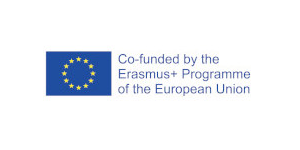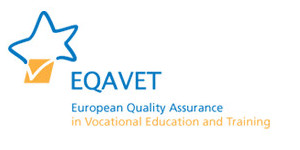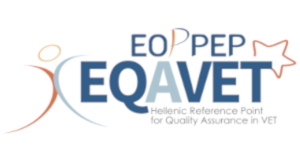Study Visit to Bonn, Germany

The Study Visit was organised on 25-27 January 2017 by the German National Reference Point for Quality Assurance in VET (DEQA-VET) within the BIBB (Federal Institute for Vocational Education and Training). It provided an opportunity for participants to reflect on the commonalities and differences in the national systems for quality assuring work based learning. The purpose of the Study Visit was to support discussions on the development of greater transparency in the national systems used in Europe.
European Understanding of the Quality Assurance of Work Based Learning
25 – 27 JANUARY 2017
Introduction
1. The Study Visit was organised by the German National Reference Point for Quality Assurance in VET (DEQA-VET) within the BIBB (Federal Institute for Vocational Education and Training). It provided an opportunity for participants to reflect on the commonalities and differences in the national systems for quality assuring work based learning. The purpose of the Study Visit was to support discussions on the development of greater transparency in the national systems used in Europe.
2. The Study Visit included a series of discussions on the quality assurance of work based learning on day one; field trips to observe training organised by companies for apprentices in the Dual system on day two; and a round table discussion for a more detailed analysis of the German model for quality assurance on day three. A copy of the agenda is attached at Annexe A. The Study Visit was attended by representatives from 11 countries (CZ, DE, EL, FN, HR, HU, IT, NL, RO, SL and UK – Wales).
3. Prior to attending the Study Visit, representatives from each country completed a questionnaire on their national system. An analysis of these responses is included in Annexe B.
Day One
4. The participants were welcomed by Helena Sabbagh, Head of DEQA-VET from BIBB. This was followed by an introduction to the German Dual system (from Airi Schmidtpott from BIBB) and an explanation of Germany’s training regulations and approach to the quality assurance of work based learning from Helena Sabbagh. These introductory presentations set the scene for the subsequent discussions on day one and provided important contextual information for the visits which took place on day two.
5. The first day was organised around three group discussions. For each discussion the topic was introduced with a short presentation of information from the pre-Study Visit survey. This was followed by a discussion in two groups and a plenary discussion to identify key themes and trends. The topics for discussion were:
- monitoring the quality of work based learning;
- how to decide on the content of work based learning;
- how to involve stakeholders in quality assuring work based learning.
6. The first discussion (on monitoring the quality of work based learning) focused on two key questions:
- how do countries ensure the quality of work based learning is monitored?
- how are the results of this monitoring used?
7. The feedback from the discussions (presented by rapporteurs from HR and IT) included the following observations:
- many countries use similar instruments (the design of the curricula, the collection of data, the production of system-level reports etc.) to monitor and measure the quality of work based learning;
- there is extensive reliance on self-assessment as a means of monitoring the quality of provision;
- the inspections system (where it exists) is usually designed to monitor the quality of provision in VET schools rather than companies;
- the quality of provision is often determined by the extent to which there is a culture of quality in the companies – this is usually more important than an external monitoring or inspection system (e.g. many companies have to comply with international or European standards and these have a greater impact on the quality assurance of the work based training that they offer. In such situations external monitoring or inspection adds little value);
- the monitoring of the quality of provision has to be undertaken at both the provider and the system level – and this means that work based tutors (and VET school tutors who support learners during their training) need to be involved in the quality assurance processes;
- there is a clear divide between systems where there is a set of quality assurance instruments that must be used and those countries where the same instruments could be used;
- there is a second divide between countries in relation to the quality assurance of work based learning – in some countries the system is led by government (sometimes by using its influence and financial relationships with VET schools) or its agencies; in others it is led by the employers or their representative organisations;
- it is important that information from the monitoring activities is used, as part of a long-term strategy, to make changes, particularly in relation to the curricula.
8. Using the feedback from the rapporteurs, the whole group identified three key issues which needed to be considered further:
- every country faces difficulties (particularly in some sectors) engaging with, and persuading, employers to be involved in work-based learning. This makes it difficult to create expectations in relation to quality assurance which can be seen as onerous on employers. The underlying challenge of finding a sufficient number of employers willing to be involved in work based learning is significant – and is more difficult when other initiatives subsidise employers to recruit those who are currently unemployed. The policies associated with helping the unemployed can have an impact on policies to strengthen the quality of apprenticeships and work based learning;
- who is really responsible for leading the work on quality assurance at the provider level – is it individual employers (with the risk of inconsistency because of the number of employers that are involved) or is the VET school (with the risk that the system is designed for the world of education rather than the world of work)?;
- increasingly countries report that employers are dissatisfied with the competences and skills of students leaving the school system. This makes it more difficult to recruit apprentices with the attitudes, values and abilities that employers need. This can encourage employers to walk away from schemes that were designed for school leavers and recruit graduates as apprentices.
9. The second discussion (on the content of work based learning) focused on two key questions:
- how do countries decide the content of work based learning?
- how do VET providers use this content to develop programmes?
- decisions on who decides the content of the curricula are critical – sometimes the VET schools have an advisory role; sometimes the employers have an advisory role; and sometimes the decisions are shared;
- there is an on-going debate in most countries about how to create the right balance between the generic skills needed by learners and the company-specific skills and competences required by individual employers. Achieving the ‘right balance’ is important for the quality of work based learning and affects the quality assurance processes associated with ensuring or monitoring quality;
- there are different approaches to the development of content – it can be based on the current needs of industry/employers or it can be based on a forecast of what employers will need in the future;
- VET schools often have some influence over the content of the work based learning they offer. However this is usually within the context of a set of national expectations which specify what should be implemented at the local or provider level;
- the decision on whether the content of work based learning should focus on the needs of an individual employer or the skills that are required to work anywhere within the industry. This decision is influenced by the existence of a modular or unit based approach to training e.g. if the units/modules are small it is more difficult for learners to develop a broad set of skills and they are more likely to focus on the immediate needs of an individual employer.
11. Using the feedback from the rapporteurs, the whole group identified three challenges which needed to be considered further:
- the updating of the content of the curricula for work based learning is too slow (there was one example of an occupation using Standards which were developed ten years ago.) Countries need to find ways to respond more quickly to the needs of the world of work;
- most countries believe that there is an irreversible trend towards more work based learning. Consequently the need to find ways to assure the quality of this provision will become more important. However, despite this belief, some countries are experiencing resistance from teachers who believe there are risks to the overall VET system of increasingly transferring more responsibility to employers/industry;
- the debate over whether to focus work based learning on transversal skills (which support learners throughout their careers – often seen as the education part of the VET programmes) and the occupational specific skills (which prepare learners for their ‘first job’ – often seen as the training part of the VET programme) is on-going – it appears not to be settled and agreed in this European context.
12. The third discussion (on how to involve stakeholders in quality assuring work based learning) focused on one key question:
- how do stakeholders work together to quality assure work based learning?
13. The feedback from the discussions (presented by rapporteurs from HR and IT) included the following observations:
- two approaches seem to exist – those which are based on a permanent and stable structure which brings together all the relevant stakeholders; and those where there is a more pragmatic and ad-hoc arrangement which brings people together when the needs arises. In the former situation the system is more likely to be regulated and the stakeholders are part of the work based learning system; in the latter situation there is less likelihood of there being an on-going dialogue on the quality of work based learning;
- ensuring the voice of the learners is important – not just at the provider level; · at the provider level there are examples of exchange programme between
- trainers and VET teachers – these help all stakeholders to strengthen their understanding of each other’s priorities;
- informal co-operation (which often takes many years to develop into a strong collaboration) is often as important as any formal structure which oversees the quality assurance of work based learning;
- there are many examples of employers (and other stakeholders) participating in evaluations and completing questionnaires on the quality of work based learning (usually at a VET provider level);
- in some countries, structural changes are taking place to strengthen the involvement of stakeholders e.g. the creation of sector skills councils to represent specific industries/sectors;
- in those countries where work based learning and other aspects of the VET programme are separately certificated, there is a need for different sets of quality assurance processes.
14. Using the feedback from the rapporteurs, the whole group highlighted the importance of deciding whether to informally or formally involve stakeholders in the quality assurance decisions. For some participants the creation of formal partnerships in VET (including VET providers, government, employers and employee representatives) was important as a way to ensure the quality of provision; for others a more informal arrangement was part of the national tradition and culture of VET.
15. In addition, during the first day, there was a short presentation and discussion on the results of the pre-Study Visit questionnaire. The results and analysis were presented in a draft format and participants were invited to send detailed written comments (and corrections) within two weeks. These comments and feedback have been used to prepare the final version of the analysis in Annexe B.
Day Two
16. During the second day the group looked at the practical aspects of work based learning in the German Dual system and the company’s role in relation to quality assurance. There were visits to:
- GKN Sinter Metals in Bonn-Mehlem;
- one of the inter-company training centres for the Chamber of Crafts (Bildungszentrum Butzweilerhof in Cologne).
17. Before starting the company visits, the participants were welcomed to the BIBB by its vice president, Professor Dr. Reinhold Weiß. He outlined the history of the BIBB and set out the main features of the work based learning programmes used in Germany.
18. The visit to GKN Sinter Metals began with a presentation from, and discussion with, the training manager. Herr Prokop outlined the approach to the three year training programme taken by GKN Sinter Metals; the importance of apprentices spending one year in the training centre before moving into the factory; the value of providing apprentices with opportunities to work in different roles in the factory; and the company’s model of training which was based on providing an individualised programme for each learner. Herr Prokop also explained that the recruitment difficulties facing the company had encouraged them to develop a second apprenticeship programme which provides company-based training alongside study for a degree. GKN Sinter Metals also trains apprentices from other companies when there are parts of their programme which cannot be learnt in these companies.
19. During the discussion, Herr Prokop outlined some of the challenges facing the company in relation to work based learning:
- the specialised nature of the work means that the company cannot go into the labour market to recruit people with the skills that are needed. The company has to ‘grow their own’ staff;
- to complete the apprenticeship programme, trainees need to pass the final examinations set by the Chambers (the third year of the training programme is dedicated to preparing for the examinations);
- training apprentices is expensive because they do not add productive value to the company before they are fully qualified – this is the reality in the specialised engineering sector;
- each year 300-400 learners apply for an apprenticeship with GKN Sinter Metals – the company is recruits 15;
- helping learners to develop the ‘soft skills’ they need to work in a company is often more difficult than providing training connected to the technical aspects of the apprenticeship.
20. Following the discussions, there was a tour of the factory with many opportunities to observe learners being trained in the training centre or working in different parts of the factory; and to discuss the programme with those who were close to finishing their apprenticeship.
21. The visit to the Bildungszentrum Butzweilerhof in Cologne began with presentations, and discussions, with the Head of Department for training advice and apprentices, Chamber of Crafts, Cologne, (Herr Arik Werle) and the deputy leader of Bildungszentrum Butzweilerhof Cologne (Herr Richard Draga). The intercompany training centre provides training for apprentices in the craft sector – the apprentices spend a short amount of time in the centre in order to develop and demonstrate the skills and competences they are less likely to acquire during their employment e.g. those training to become a hairdresser spend three weeks out of three years in the centre; joiners spend eight weeks; motor mechanics spend ten weeks etc.
22. The presentations and discussions highlighted the following issues:
- the centre’s provision is divided between offering ‘off-the-job’ training (70% of the work); advanced training (25%) and advising young people on their career choice (5%). In addition, more recently, the centre is developing new activities to support migrants and refugees;
- all companies in the sector contribute (based on legislation) to the costs of running the inter-company training centres;
- the centre supports employers in providing high quality work based learning – this is especially important for SMEs as they are not able to offer everything that is required by the training regulations due to their size or their degree of specialisation
- the chambers help employers to find an apprentice – this ‘matching’ service reduces the workload of employers even though the final decision about who to select is made by the employer (usually a small or medium sized enterprise in the craft sector). This is an important responsibility as companies that are unable to recruit an apprentice may decide to withdraw from the Dual system –the need for the chambers to check every apprentice has a contract;
23. Following the discussions, there was a tour of the training centre with opportunities to observe training across many occupations (joinery, carpentry, optical science, motor mechanics, hairdressing etc.).
Day Three
24. The third day began with a short presentation on the activities and emerging conclusions of the participants during the previous two days. The rapporteur (from NL) highlighted the key conclusions from the three rounds of discussions on day one (see paragraphs 8,11 and 14) and the focus of the discussions during the visits on the second day.
25. The focus for day three was the quality assurance of work based learning in the German system. This helped to inform a discussion on how to strengthen the transparency of different approaches to quality assurance in Europe. To inform the discussion, there was a presentation from Martin Fretter (DIHK-Bildungs-GmbH in Bonn) who highlighted the importance of training company-based trainers. He described one on-line scheme(1) which supports trainers to understand the training curriculum, select apprentices, organise their training programmes and prepare for their examinations. This scheme is available via the German Chambers of Commerce Abroad(2).
26. The majority of the third day was organised using a round table format - the discussions focused on a series of comments from the following representatives of the German VET system:
- Barbara Fabian, Association of German Chambers of Commerce and Industry, Brussels;
- Joachim Lapp, Coordinating Association of German Industry for Vocational Education, Bonn;
- Mario Patuzzi, Deutscher Gewerkschaftsbund/German Trade Union Confederation, Berlin;
- Barbara Hemkes, BIBB, Head of the Section with responsibility for DEQA-VET and the quality of VET.
27. The facilitator encouraged the round table participants to comment on how the quality of work based learning is assured in Germany; to identify what is not working as well as it could; and to respond to questions from the participants.
28. The panel members emphasised that the German system is based on legislation; it is based on a tripartite model of collaboration; it relies on apprentices having training contracts from employers; and it is based on consensus. The system provides many opportunities for stakeholders’ voices to be heard; emphasises the role of company based trainers and meisters; and the importance of establishing standards and competences that meet the needs of the labour market.
29. The panel also identified the following challenges which are faced by the German work based learning system and the implications for quality assurance:
- it is increasingly difficult to recruit apprentices – this is because of demographic changes and the increasing attractiveness of the academic pathways;
- the digitalisation of many areas of work is putting significant pressure on the content of training programmes and there is a need to update standards more quickly;
- finding ways to help the German system respond to the recent arrival of many migrants and refugees;
- employers feel that many potential recruits are not ready for an apprenticeship – this is a concern about the quality of the school system. As a consequence some employers are looking to graduates to take on apprenticeships;
- there are some examples of poor quality training in the Dual system – there can be a perception of apprentices as ‘cheap labour’ and this is something that should concern everyone in the VET system;
- there are high drop-out rates and too many apprentices are failing to complete their programmes or they are failing the final examinations set by the Chambers.
30. The participants asked a number of questions:
- would the high quality of the German model (with the focus on the ‘Made in Germany’ brand which signals quality) be applicable in a country whose competitive model focuses on minimising costs? There was agreement that the German model may not be applicable in every context, and consequently the approach to the quality assurance of work based learning is unlikely to be identical across Europe;
- what are the key conditions for success in relation to high quality work based learning?
The panel identified the following:
- a philosophy, tradition or culture which focuses on high quality;
- consensus from the three main agents – employers, employee representatives and government – and their involvement in decisions. This includes a wage bargaining system which is based on finding a consensus and mutual respect;
- ensuring closeness to the labour market;
- the company based trainers are also employees in the company/business and their training role is part of their responsibilities – this helps them to stay in touch with the realities of day-to-day work in the company;
- the collective bargaining system underpins the Dual system of VET training and provides certainty to learners and employers;
- the contract is between the company and the learner and consequently they are seen as members of staff and not students or visitors to the company/business;
- apprenticeships are an implicit and explicit promise by society to learners – and society recognises that this promise has to be honoured;
- enabling those who are closest to the impact of any decision to make the decision (subsidiarity);
- how the final examination is organised – in the German model examinations are organised by the Chambers; the individual trainers and teachers of the apprentices are not involved in setting the final examinations. In this context the examinations cover the whole curricula and ensure that the learners are prepared for the job they will be doing;
- recognise that employers make commercial decisions on whether to invest in apprenticeships;
- the success of graduates from initial and continuing VET – these successes are well-known and shared widely throughout society;
- what reforms are currently being considered – the next priority will be to look at how non-formal and informal learning can be better integrated in the German system.
Final comments
31. Greater transparency in how quality assurance systems operate in different countries helps to build mutual trust and enable more VET learners to benefit from mobility programmes. It also encourages more employers (not just the multinational companies) to be confident that the quality of training in another country is comparable even though it is different.
32. There is, across Europe, a strong interest in the quality assurance of work based learning. As mentioned earlier, most participants expect work based learning to become more important. In this environment there is a need to consider carefully whether the existing arrangements (where they are based on a VET school model of work based learning) are sufficient.
33. In her final comments Helena Sabbagh acknowledged the high levels of interest in the quality assurance of work based learning. This demonstrates the relevance of the topic in many different European contexts. Helena closed the meeting by thanking the participants, the organisers, the rapporteurs and the presenters.
Keith Brumfitt
4/3/2017
 English (UK)
English (UK)  Greek (Greece)
Greek (Greece) 


